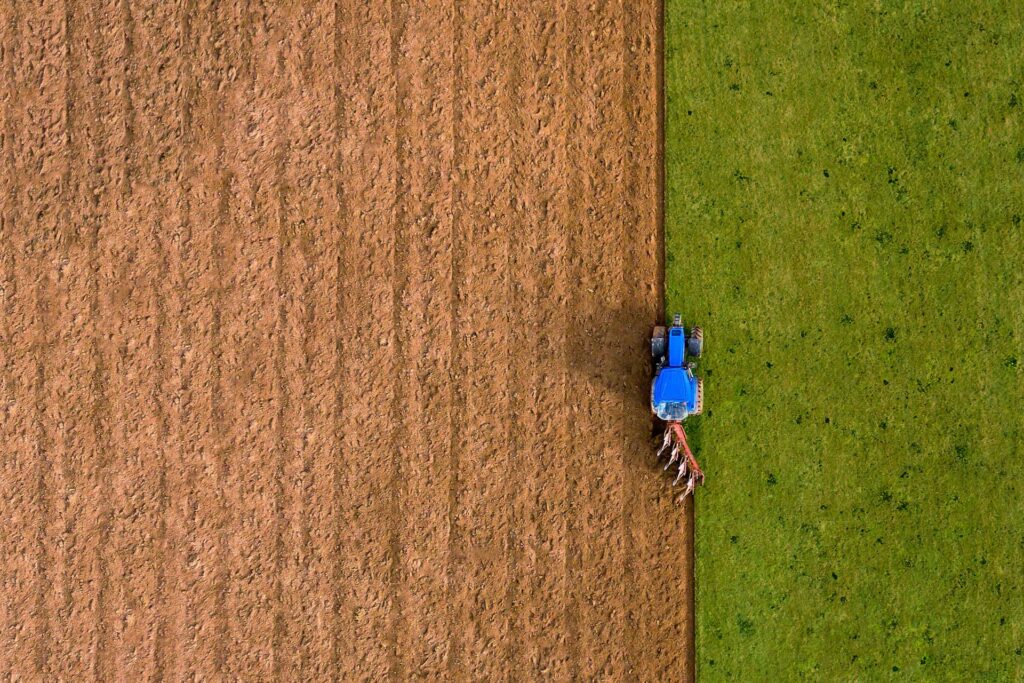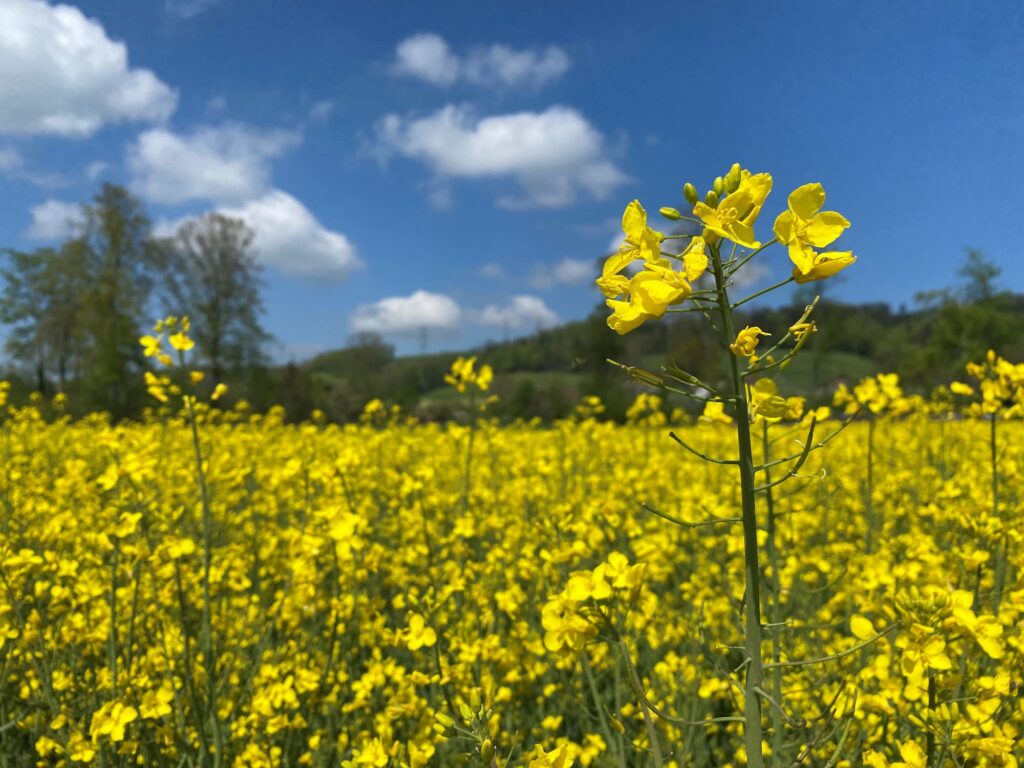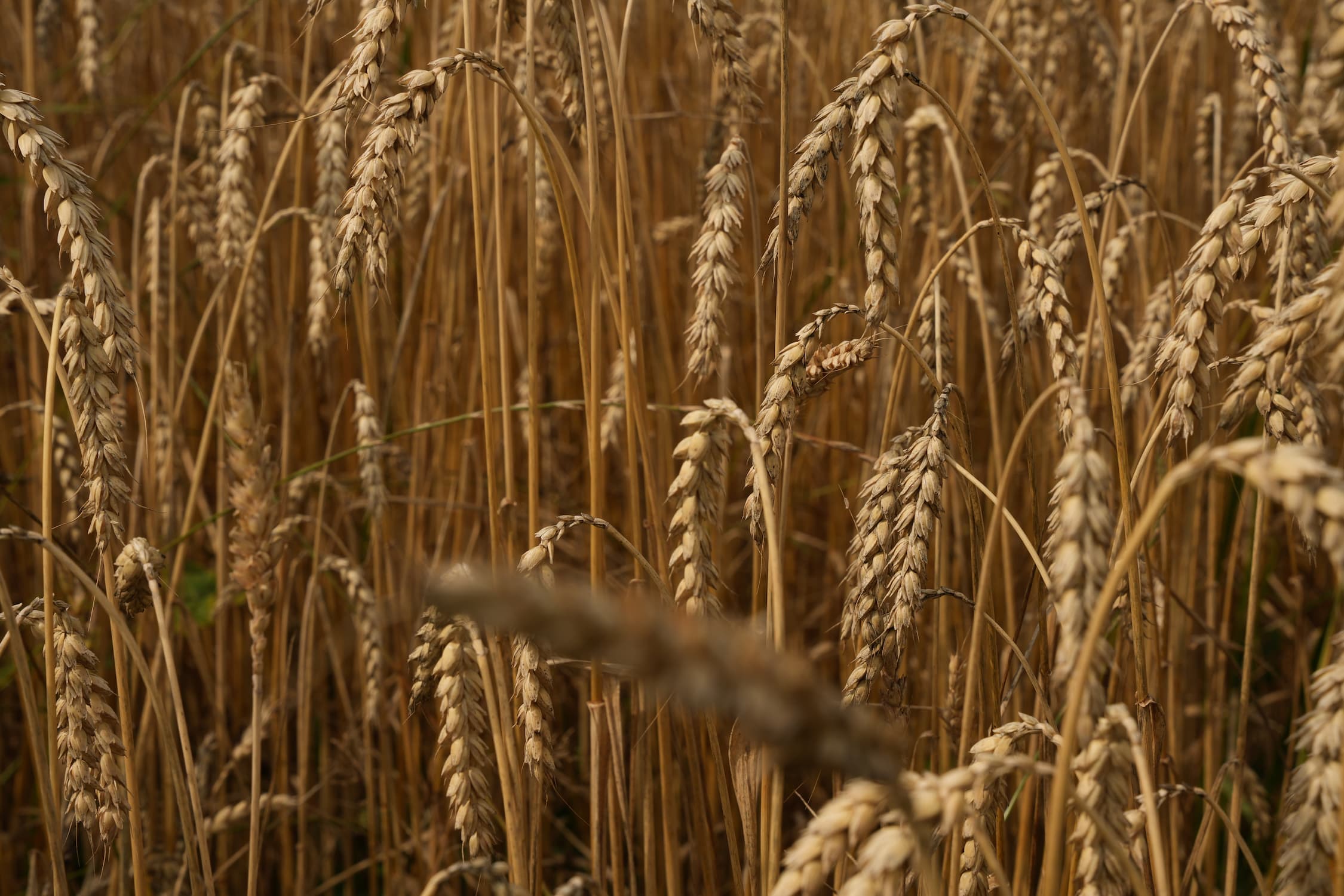Cereals for people and animals
Cereals are the most important arable crops in Switzerland, accounting for an area of around 140,000 hectares. This corresponds to approximately the area of the canton of Lucerne. In the area of cereal cultivation, the agricultural sector differentiates between bread cereals for human consumption and fodder cereals for animals. The most important bread cereal types are wheat, spelt and rye. Farmers also plant wild emmer, einkorn wheat, millet, barley and buckwheat at a smaller scale. Livestock receive feed wheat, barley, oats, triticale or forage maize.
The sowing of cereals begins in autumn. Winter cereals require cold so that they can form grains the following year. Depending on the variety, it is possible to first sow wheat, barley and oats in spring. These cereals are referred to as summer cereals.
The harvest season begins at the end of June with barley. Wheat and triticale then follow at the end of July. The harvesting of rye, spelt, oats, wild emmer and einkorn wheat does not commence until August, while grain maize is left in the fields until October.

Plough, harrow or sow directly
Farmers prepare the soil for the sowing of crops. In the case of ploughing, the soil is loosened and turned. This reduces the presence of weeds or diseases. Harrowing sees the coarse soil at the surface reduced to a finer seedbed. There are farming families who put their faith in direct sowing. With this method, which is also known as “no-till farming”, special machines open up a recess in the ground as part of a work process. Seeds are then sown into the recess before it is closed up again. This is to protect the soil.
Switzerland is a land of potatoes
The potato is an important crop in the Swiss agricultural sector. It is grown on more than 10,000 hectares. Potato cultivation starts with the seed potatoes. In pre-germination bags, these seed potatoes develop small sprouts, thus becoming ready for planting. For this process, the farmers use planting tools, before piling up the dams that are characteristic of potato fields. While the potatoes would also thrive without them, they facilitate mechanical weed control and make harvesting with the potato harvester easier. Furthermore, the dams warm up more quickly in spring than flat ground and the risk of waterlogging is reduced. The harvest begins when the potato foliage dies. Planters influence the time at which this occurs by killing off the foliage prematurely either by mechanical or chemical means. The harvester digs out the potato tubers and transports them to the surface using a conveyor belt. Here, sorting is performed by hand to remove stones and damaged potatoes.
The yellow fields of canola
Canola is the most important oil seed in the Swiss agricultural sector. It is grown on around 23,000 hectares of cultivated land. Farmers in Switzerland almost exclusively plant winter canola, which is sown between the end of August and mid-September. The harvest takes place around mid-July when the canola reaches its optimum ripeness. Canola cake and canola meal are produced as a by-product of oil production. Farming families use this as feed for their livestock.


